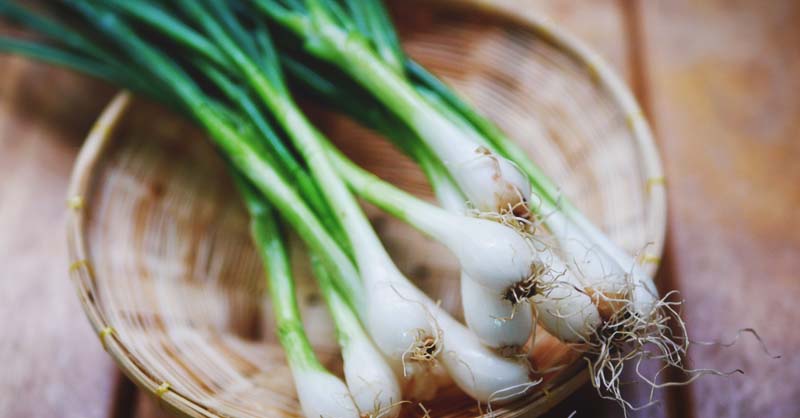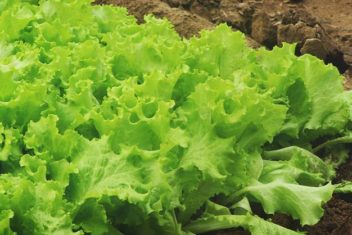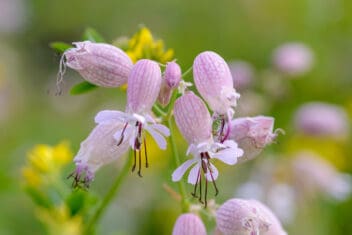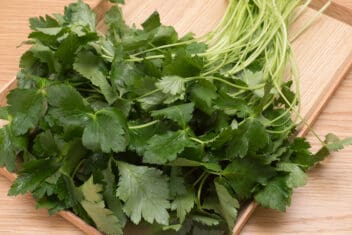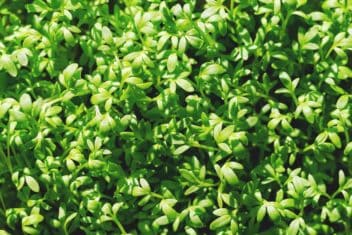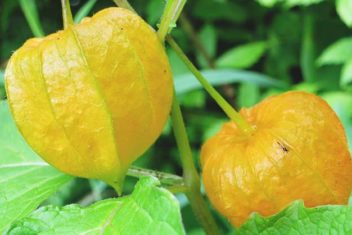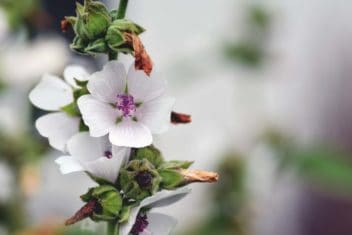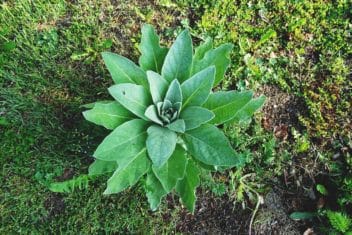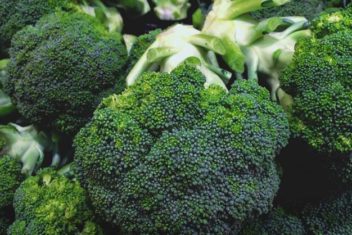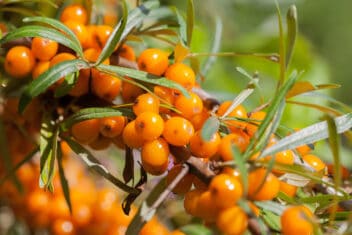Imagine a world without scallions. Soups wouldn’t be the same and omelets would suddenly be a lot less exciting. Fried rice or baked potatoes? Forget it. Fortunately, you can usually find scallions at the store and farmer’s markets, but growing scallions in your own garden means you have a ready supply that’s as fresh as possible at half the price.
There are many advantages to growing scallions rather than buying them. The flavor is fuller than most scallions you find at the grocery store and you can control what chemicals touch your crops. It’s also much more affordable, and you can decide when to harvest – whether you prefer delicate baby scallions or more robust, larger ones. Finally, the small size of scallions makes easier to chop and add to dishes than a full-sized onion.
Scallions have many other names including, green onions, spring onions, svelte onions, young onions, and bunching onions. No matter what you call them they’re basically baby onions that haven’t formed bulbs yet or may not form a bulb at all. Basically, you get the flavor of an onion, but it’s faster than waiting for full-grown onions to grow.
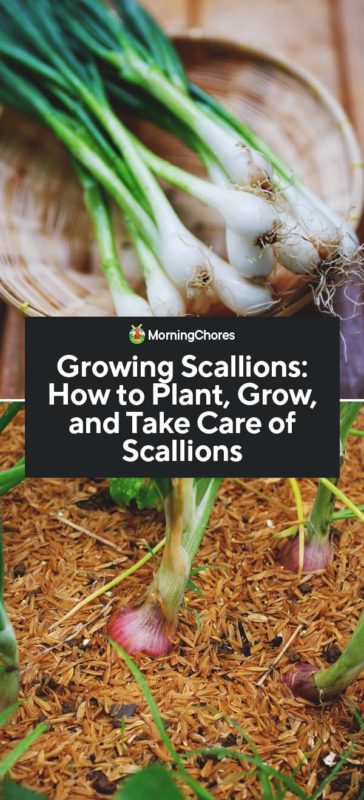
Scallion Varieties
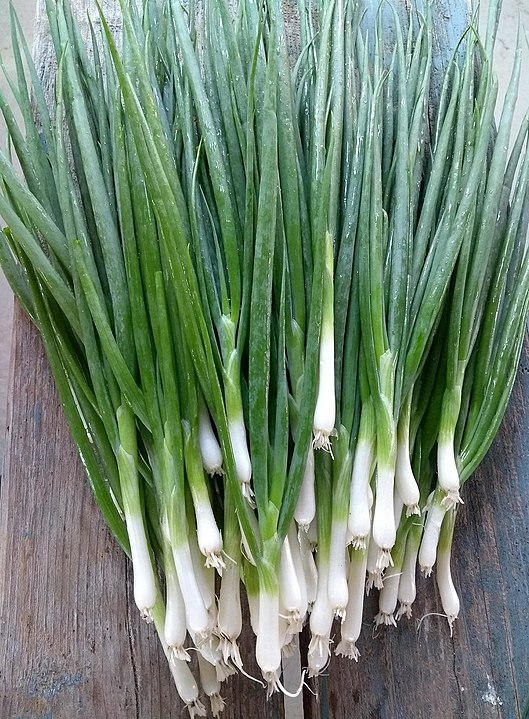
You can grow a scallion from any type of onion. However, some onions do better as scallions than others. Varieties that are marketed as scallions or bunching onions do best. These are my particular favorites:
Evergreen Hardy White
This open-pollinated, heirloom variety is cold hardy and can be planted from early spring until early fall. Harvest through early winter unprotected or cover with a row cover and mulch with straw to extend the harvest. Takes 65 days to maturity.
Deep Purple
Deep Purple has a beautiful purple color on the bulb and lower stem. The color is vibrant even after cooking. Best for spring and summer plantings.
Nabechan
This Japanese variety is intensely flavorful. It doesn’t have a bulb, but rather a thick stem. It’s larger than other varieties and plants should be put at least six inches apart. This variety takes sixty days to maturity.
Parade
This standard bunching onion has a bright white stalk and no bulb. It has particularly tender greens and a zesty flavor. Parade can handle a variety of soils and is ready for harvest in 65 days.
Guardsman
With a small bulb and tall green leaves, this is an attractive and tasty variety. Only 50 days until you’re enjoying its mild flavor in spring dishes.
Scallion, Evergreen Hardy White, Microgreen
This variety makes a great microgreen and it lets you have green onions in less than three weeks. This video on growing microgreens from Johnny’s Seeds will help you get started with growing this type.
Planting Scallions
Sun Requirements
Like their parent, the onion, scallions need full sun. They grow in zones 3-9.
Soil Requirements
Scallions require well-drained soil that is sandy and loamy. The ideal pH for scallions and green onions is 6.2 – 6.8. I often grow mine in raised beds because my soil is heavy and doesn’t drain well.
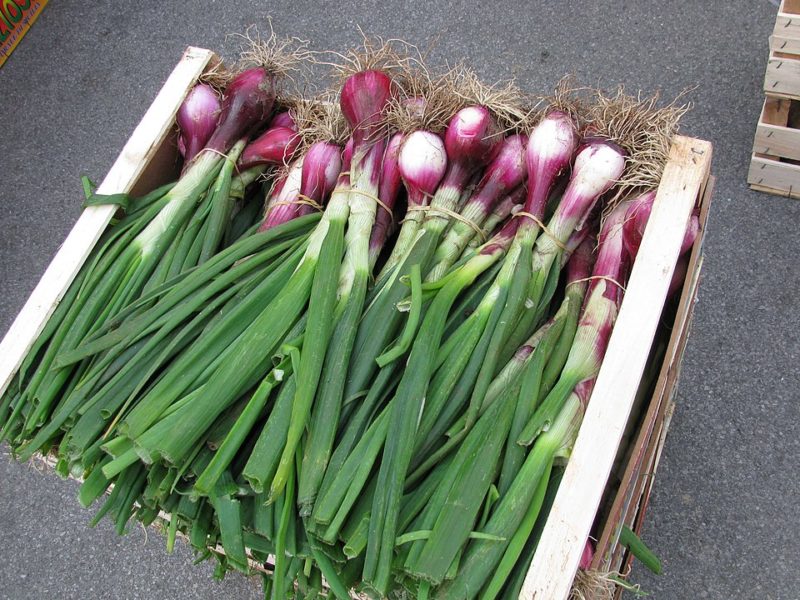
Growing From Seed
You can grow scallions in three ways – from seeds, onion sets, and purchased plants.
Starting from seed gets you the greatest diversity. You want to plant seeds early, about 8-10 weeks before your last frost date. Sow onion seed in flats, not trays. Seeds are easy to sprinkle thinly throughout the tray. Water and press into the soil. You can also direct seed into the garden.
Planting From Sets
Sets are easy to find at most local garden stores. The drawback is that there aren’t as many options. Most places stock generic red, yellow and white onions.
Plant your sets as quickly as possible after purchasing. If you need to store them, put in a cool dry place away from light. Plant sets directly into the garden about 2 inches deep with the base (the round end) is facing downward.
Sets also make good fall plantings. Plant at the same time you put your garlic in the ground – typically from September through November. You can plant in a low tunnel or in an unheated greenhouse. They’ll have some top growth in the fall and go dormant in winter. They’ll start growing again in late winter for an early spring harvest.
Starts
You can purchase young onion or scallion plants from nurseries. Purchasing plants, or starts, is a bit more expensive but it gives you a crop quickly. To begin, trim the roots to about three inches. Plant in moist soil above the “white” line on the plants. Firm the soil around the plants.
Thinnings
One way to enjoy scallions is to plant traditional onion seeds close together. Since they won’t grow properly if they are crowded, you’ll need to thin them. Do this when the leaves are about 6-8 inches tall. This will give you a crop that has not yet formed a bulb and has a mild onion flavor.
Spacing
Place plants in rows four inches apart. Plant seeds 1/4-inch deep.
Indoors and Containers
Scallions grow well indoors in a sunny window or under lights. Plant in a south-facing window. If the plants don’t get enough light they’ll grow slowly.
Since they’re thin and grow vertically, you can fit quite a few plants in a small space. Plant scallions two inches apart in a container that is at least six inches deep. Use a light potting mix that drains well.
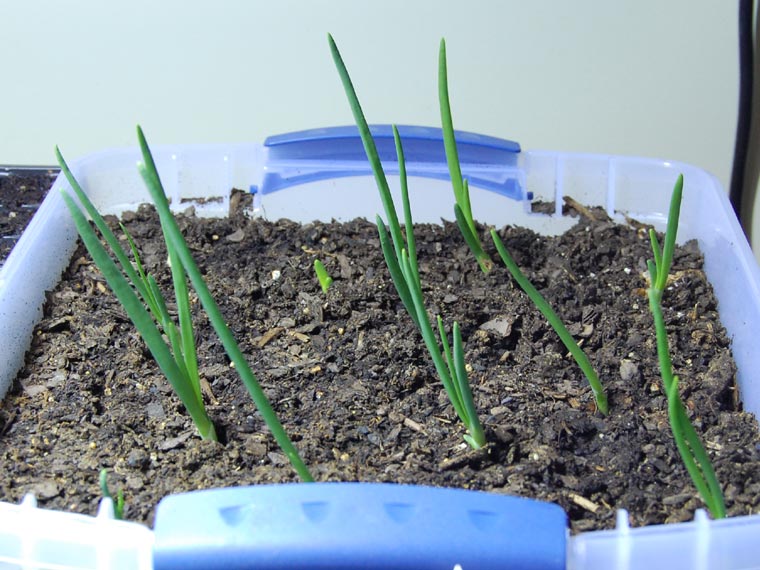
Blanching
Blanching your plants results in a greater white area going up the stalk. The white area is desirable because it’s more tender. Blanch by hilling soil up against the plant as it matures. Do this carefully so as not to disturb the roots.
Caring For Scallions
Water
Scallions are thirsty plants and require an inch of water per week. If the ground becomes hard or crusty, the scallions won’t grow. Keep moist and make sure your soil drains well.
Weeds
Scallions don’t tolerate weeds well. They have shallow roots and get overpowered quickly. Keep your scallion bed free of competing weeds. Once they get established, use mulch such as straw to discourage weeds.
Fertilizer
Scallions like rich soil. Prep your scallion bed with lots of aged manure. During the growing season, I spray fish emulsion on my scallions every two weeks.
Problems and Solutions to Growing Scallions
The two most important things for the health of any member of the onion family are to have good air circulation and good water drainage. If you have sandy, loamy soil, then you are off to a good start. If not, raised beds may be the way to go.
Thrips
The most common pests to all members of the allium family are thrips. Keep your garden free of weeds and debris so they have nowhere to hide or winter over. Insecticidal soap works well, but if you have a heavy infestation try Spinosad.
Maggots
For varieties that have a bulb, maggots can be a problem. Maggots are the larval form of flies. The maggots burrow into the bulb. This causes unsightly brown tunnels that eventually cause the bulb to rot. If left unchecked the plant will die.
A good organic pesticide kills the flies so they won’t lay eggs. Crop rotation is also important. Scallions do well in a three-year rotation, planted after peas and beans.
Cutworms
Cutworms are the larvae of moths that fly at night. They nibble through scallions at the base, killing the plants. Use plant collars and keep weeds away from your garden.
Slugs
Like most plants, scallions are victims of slugs. Use your preferred method for controlling slugs and snails.
Onion Nematodes
Root nematodes are microscopic organisms that hang out in the soil, sucking the juice out of plants at the root. You’ll first notice oval patches of stunted scallions. To control, avoid crowding plants, rotate crops, and sterilize equipment between use. You can fumigate your soil if you are having trouble keeping these pests away.
Damping Off
Damping off is a fungal disease that causes seedlings to die. There is no cure, but you can avoid it by giving young plants plenty of air circulation. Thin plants to improve air circulation, make sure they are planted in well-draining soil, water in the morning at the base of plants, and avoid overwatering.
Onion Smut
Smut is caused by a fungus that impacts young plants. Transplants aren’t usually impacted, so watch for planted seedlings with blisters or a blackish coating. Once plants get older, they grow resistance to the disease. Rotate crops and use a fungicide if you struggle with this fungus.
Companion Plants for Scallions
Scallions, green onions, and bunching onions are part of the allium family and put off a pungent odor. This helps to protect them as well as their neighbors from pests. Ideal for:
- Beets
- Cabbage
- Carrots
- Cucumber
- Lettuce
- Dill
- Kale
- Spinach
- Pepper
- Potato
- Tomato
They do not get along well with:
- Peas
- Beans
- Sage
Harvesting and Storing
There are two ways to harvest scallions. You can harvest the entire plant or trim the tops with a pair of scissors as like you do with chives.
To harvest the entire plant just pull it out of the ground. Harvest plants when they are five to six inches tall, about 60-80 days after planting, for maximum flavor. They’re also easier to cut up at this size.
To harvest leaves, cut off the tops. Leave at least two inches of leaves on the plant so that it can grow back.
Scallions don’t store well. Harvest only as many as you need for the days cooking. The best way to store scallions is in a glass jar filled with an inch or two of water. Store the jar in the refrigerator. This will keep them crisp for one week. You can also wrap them in damp paper towels and place in the fridge.
The younger the scallion the more tender it will be. Younger plants also have a more mild flavor.
Cooking Scallions
The entire scallion plant is edible and there are many many ways to use it in the kitchen, including salads, soups, stews and for flavor in marinades.
Grilling Scallions
One fun summer way to use those green onions is to grill them. They cook quickly – about twenty minutes – and go great with a meat or veggie burger.
- To prepare, trim any brown leaves and the roots off your plants.
- Use a brush to cover them with olive oil.
- Place on a medium-hot grill for twenty minutes or until brown.
- Sprinkle salt and pepper on to taste.
Chinese Cooking
I spend most of my time outdoors. So when I come inside I want to make something fast and I want it to include my fresh vegetables. Asian cooking uses a lot of scallions for flavor in dishes such as stir-frying, grilling and marinades.
Chinese cooks use the scallion in different sizes for a variety of uses. Check out the following video to see how this Chinese chef cuts scallions in many different ways.
The Bottom Line for Growing Scallions
Scallions are a fun and easy crop to grow. They can be used so many different ways. No matter if you live in a city apartment or a large ranch, they’re an easy way to add some onion flavor to your kitchen.
